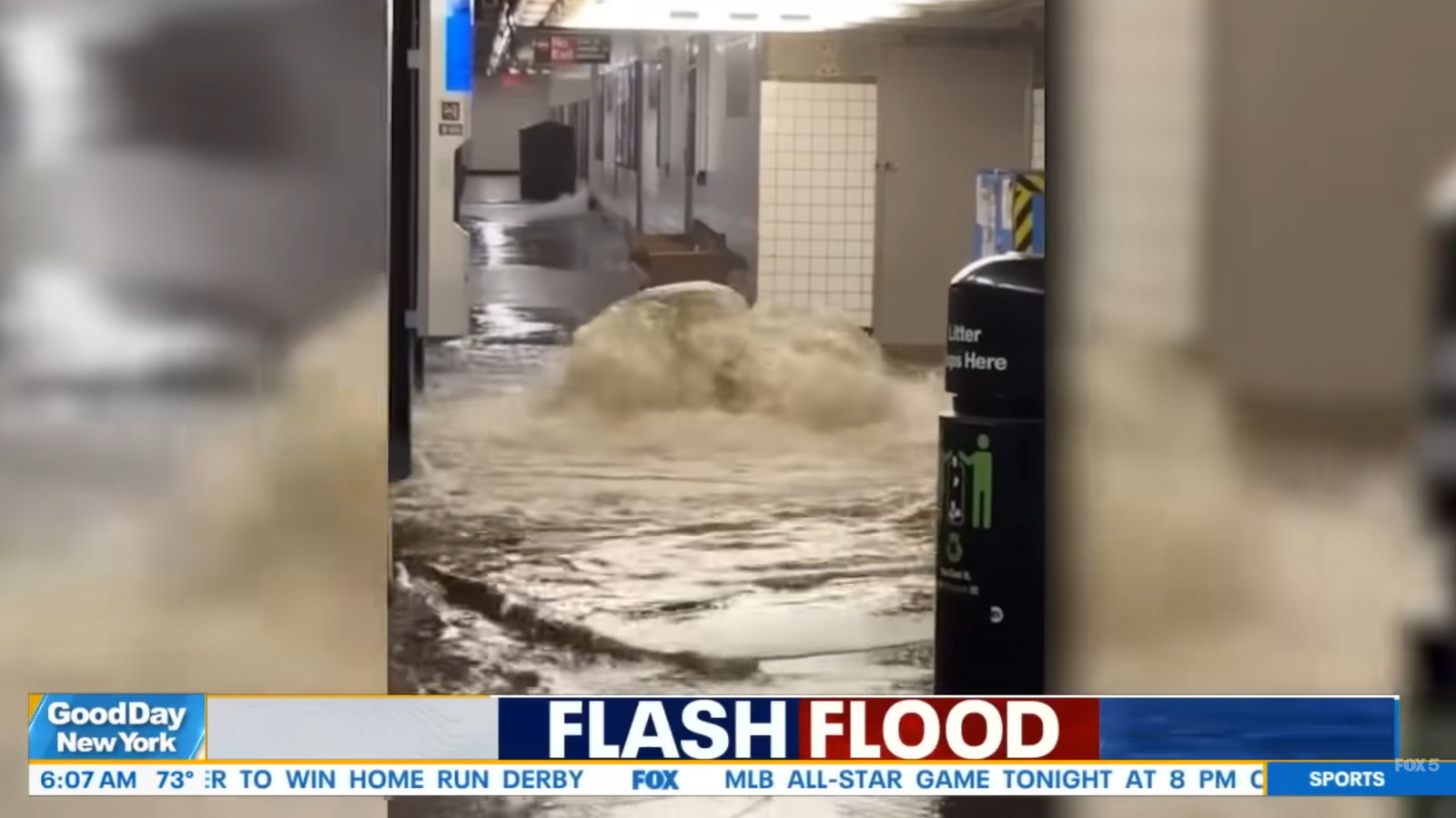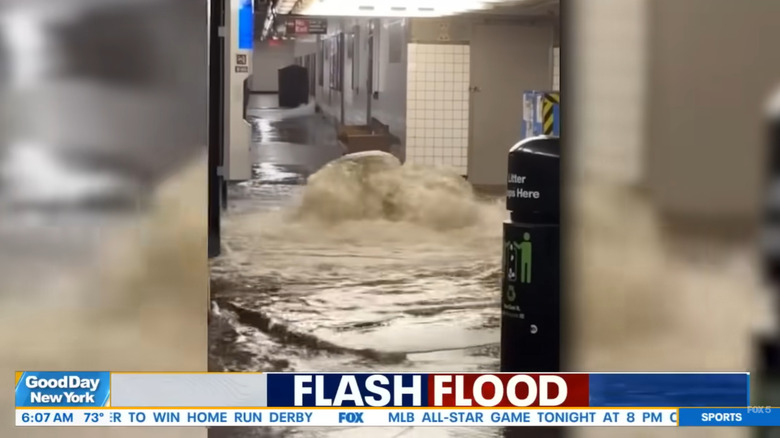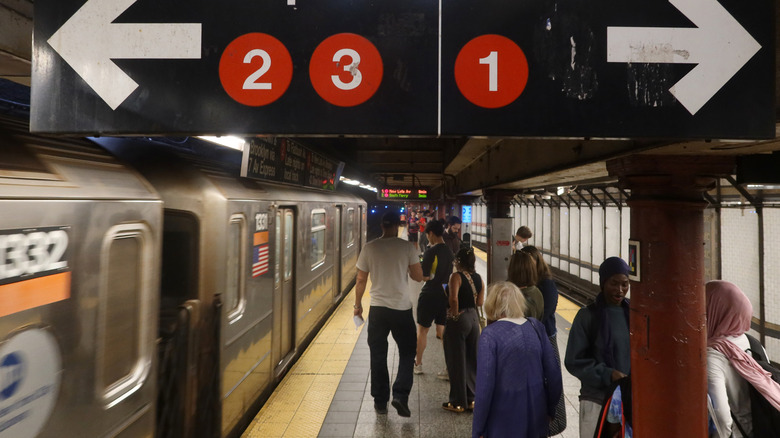The New York City Subway may be underground in most of Manhattan, but it’s certainly exposed to the elements. It’s not just the scorching summer heat and the occasional grand theft locomotive, but the torrents of storm water. A severe storm last week caused a geyser to burst through a manhole cover in a subway station platform. Sewers typically aren’t built beneath subway stations. However, this sewer covers a stream that existed before the arrival of the Dutch in the 17th century and was buried in the 19th century.
The aforementioned geyser sprang forth at the 28th Street Station on 7th Avenue. Videos from concerned onlookers flooded social media of the tower of water just beyond the turnstiles. People stood on the seats as the car doors opened and let the water flow inside stopping trains. The city’s sewer system couldn’t cope with the heavy rainfall, and it spilled over into the subway. MTA CEO Jarno Leiber told WABC:
“What happened last night is something that is a reality for our system that when you hit, when you go north, an inch and three-quarters in an hour, the city sewer system, the storm water system gets backed up and gets overwhelmed and tunnels into the stations.”
New York can’t escape nature by building over it
While flooding occurred across the system, the geyser phenomenon didn’t happen at any other stop in the system, including the two other 28th Station stations. The reason why there are multiple stations on 28th Street is a story for another day. Eric Sanderson, an ecologist at the New York Botanical Garden, explained to Gothamist:
“Before there was 28th Street, there was a forest and in that forest there was a wetland, and it turns out that the 1 train stop at 28th Street is right smack in the middle of that wetland.”
While human development has graded away most of the hills that Manhattan is named after, the island isn’t completely flat. Water will still flow to the terrain’s lowest point, and it’s 28th Street in the part of the West Side. Sanderson noted that the pavement has only exacerbated flooding because soil would be able to absorb the rainfall.
After Hurricane Sandy struck the city in 2012, the MTA has spent $369 million on fortifying the subway system against future storms. While heavy-duty marine doors, new ceiling panels and upgraded pumps will do wonders against tropical storms, keeping water out from below is out of the agency’s hands. Lieber stated that the MTA is working with the city to improve the sewer to prevent the geyser from spouting again. Still, the sewer was originally built over a century and a half ago. With climate change making storms more intense, it will be a difficult wait until the upgrades are built and one can only hope that a new sewer can cope with storm 20 or 30 years from now.




